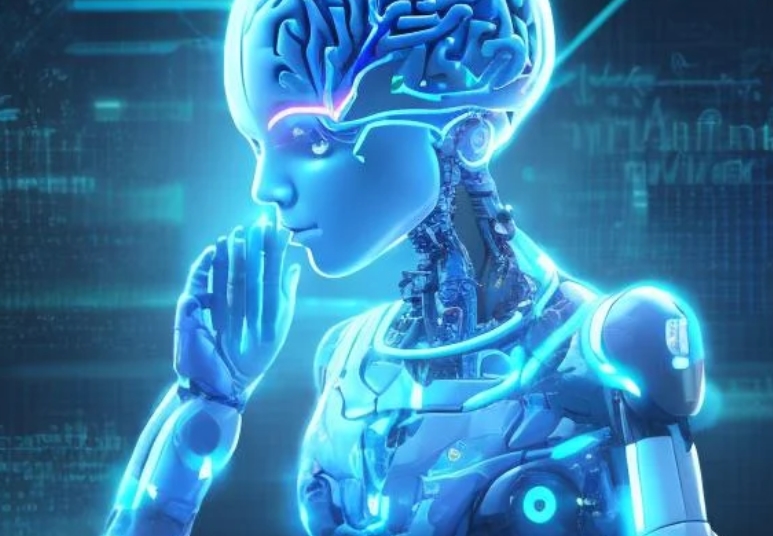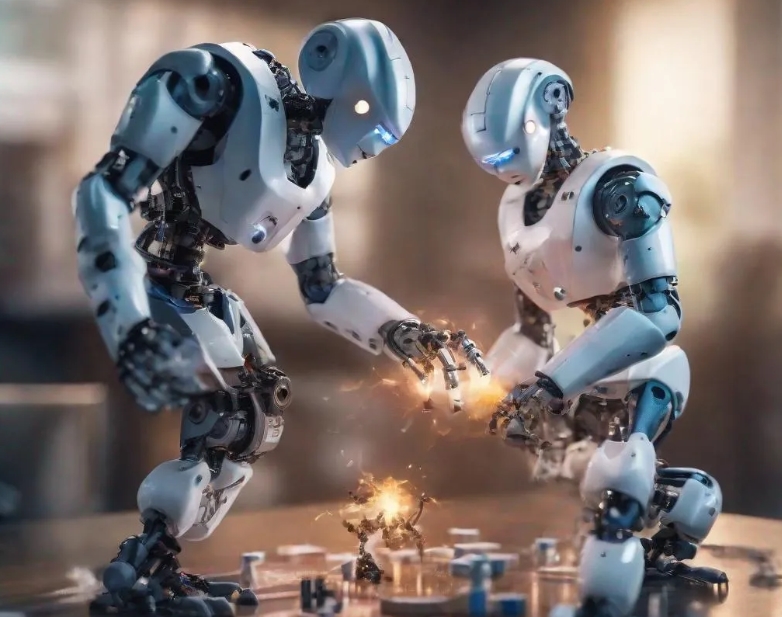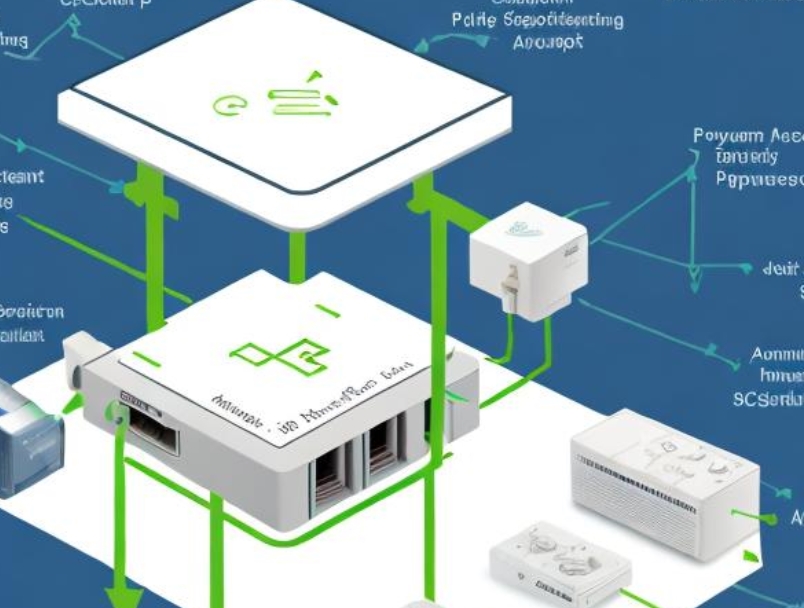
As artificial intelligence continues to advance, its integration with robotics is opening up new frontiers of possibility. This article delves into the future of AI-powered robotics, exploring emerging technologies, potential applications, and the transformative impact on various sectors.
1. Advanced Perception and Cognition
Future AI-powered robots will have enhanced sensing capabilities:
Computer Vision:
- 3D object recognition in complex environments
- Real-time analysis of dynamic scenes
Natural Language Processing:
- Seamless human-robot communication
- Understanding context and nuances in language
Emotional Intelligence:
- Recognizing and responding to human emotions
- Adapting behavior based on social cues
2. Improved Dexterity and Mobility
AI will enable more sophisticated physical capabilities:
Soft Robotics:
- Flexible, adaptable grippers for delicate tasks
- Biomimetic designs inspired by nature
Bipedal and Quadrupedal Locomotion:
- Robots that can navigate diverse terrains
- Improved balance and agility in movement
Swarm Robotics:
- Coordinated behavior of multiple robots
- Collective problem-solving and task execution
3. Autonomous Decision-Making
AI will enhance robots' ability to make complex decisions:
Reinforcement Learning:
- Robots that learn from trial and error
- Adapting strategies in unpredictable environments
Ethical Decision-Making:
- Implementing moral guidelines in robot behavior
- Balancing multiple objectives in decision processes
Predictive Analytics:
- Anticipating future scenarios and planning accordingly
- Proactive problem-solving and maintenance
4. Human-Robot Collaboration
The future will see closer integration of humans and robots:
Cobots (Collaborative Robots):
- Safe interaction with humans in shared workspaces
- Augmenting human capabilities in various tasks
Intuitive Interfaces:
- Brain-computer interfaces for direct robot control
- Augmented reality for enhanced human-robot interaction
Adaptive Learning:
- Robots that learn from human demonstration
- Personalizing behavior to individual user preferences
5. Healthcare and Assistive Robotics
AI-powered robots will revolutionize healthcare:
Surgical Robots:
- AI-enhanced precision in minimally invasive procedures
- Remote surgery capabilities
Elderly Care Robots:
- Providing companionship and daily assistance
- Monitoring health and alerting caregivers
Rehabilitation Robots:
- Personalized physical therapy routines
- Adaptive support for patients with disabilities
6. Industrial and Manufacturing Applications
AI will transform factories and production lines:
Adaptive Manufacturing:
- Robots that can switch between different tasks
- Real-time optimization of production processes
Quality Control:
- AI-powered visual inspection systems
- Predictive maintenance of equipment
Supply Chain Optimization:
- Autonomous warehouse management
- Coordinated logistics and delivery systems
7. Environmental and Exploration Robotics
AI-powered robots will tackle global challenges:
Ocean Exploration:
- Autonomous underwater vehicles for deep-sea research
- Marine ecosystem monitoring and conservation
Disaster Response:
- Robots for search and rescue in hazardous environments
- Autonomous systems for disaster area assessment
Space Exploration:
- AI-driven rovers for planetary exploration
- Self-maintaining systems for long-term space missions
8. Ethical and Societal Considerations
The rise of AI-powered robotics raises important questions:
Job Displacement:
- Addressing workforce transitions and retraining
- Exploring new economic models (e.g., universal basic income)
Privacy and Security:
- Ensuring data protection in robot-human interactions
- Safeguarding against potential misuse or hacking
Accountability and Liability:
- Determining responsibility in robot-caused incidents
- Developing legal frameworks for AI and robotics
9. Challenges and Limitations
Despite rapid progress, several challenges remain:
Energy Efficiency:
- Developing long-lasting, portable power sources
- Optimizing energy consumption in complex tasks
Adaptability:
- Creating robots that can function in unstructured environments
- Generalizing learning across different tasks and scenarios
Ethical AI:
- Implementing transparent and unbiased decision-making processes
- Ensuring robots adhere to human values and social norms
10. The Road Ahead
The future of AI-powered robotics holds immense potential:
- Seamless Integration: Robots becoming an integral part of daily life
- Enhanced Capabilities: Continual improvements in AI leading to more sophisticated robotic systems
- Collaborative Ecosystems: Networks of AI-powered robots working together to solve complex problems
- Personalization: Robots tailored to individual needs and preferences
As AI and robotics continue to evolve, we stand on the brink of a new era where intelligent machines will play an increasingly significant role in shaping our world. While challenges remain, the potential benefits in areas such as healthcare, environmental conservation, and space exploration are immense. As we move forward, it will be crucial to address ethical considerations and ensure that the development of AI-powered robotics aligns with human values and societal needs.
american-boffin.com
bfbchamp.com
democraticcoma.com
tigrepelvar.com
charpoles.com
derbywheelblazers.com
fansfocus.net
guildnow.com
hediyeteyze.com
isprimecdn.com
kiira-korpi.net
manutd24.com
mediumtylerhenry.com
mishanghai.org
savethreestrikes.com
smilesbydavis.com
10puntos.net
band-shirt.com
icelandtrails.com
paulmarioday.com
thefunnynanny.com
Dave Tries Ballet
Buon Grande
Criacao Sites
Perry Perkins Books
Writing Essay in AU
Ka Soku
Blood is Blood Movie
Eleanor Writes Things
The Happy Prince Beirut
Town of Witless Bay
Online Igrovoi Club
Trigeminal Neuralgia - Ronald Brisman MD
Chocolate City Burlesque
Advanced Electric Scooters
W Tougei
Breadboard Maniac
Takasu App



